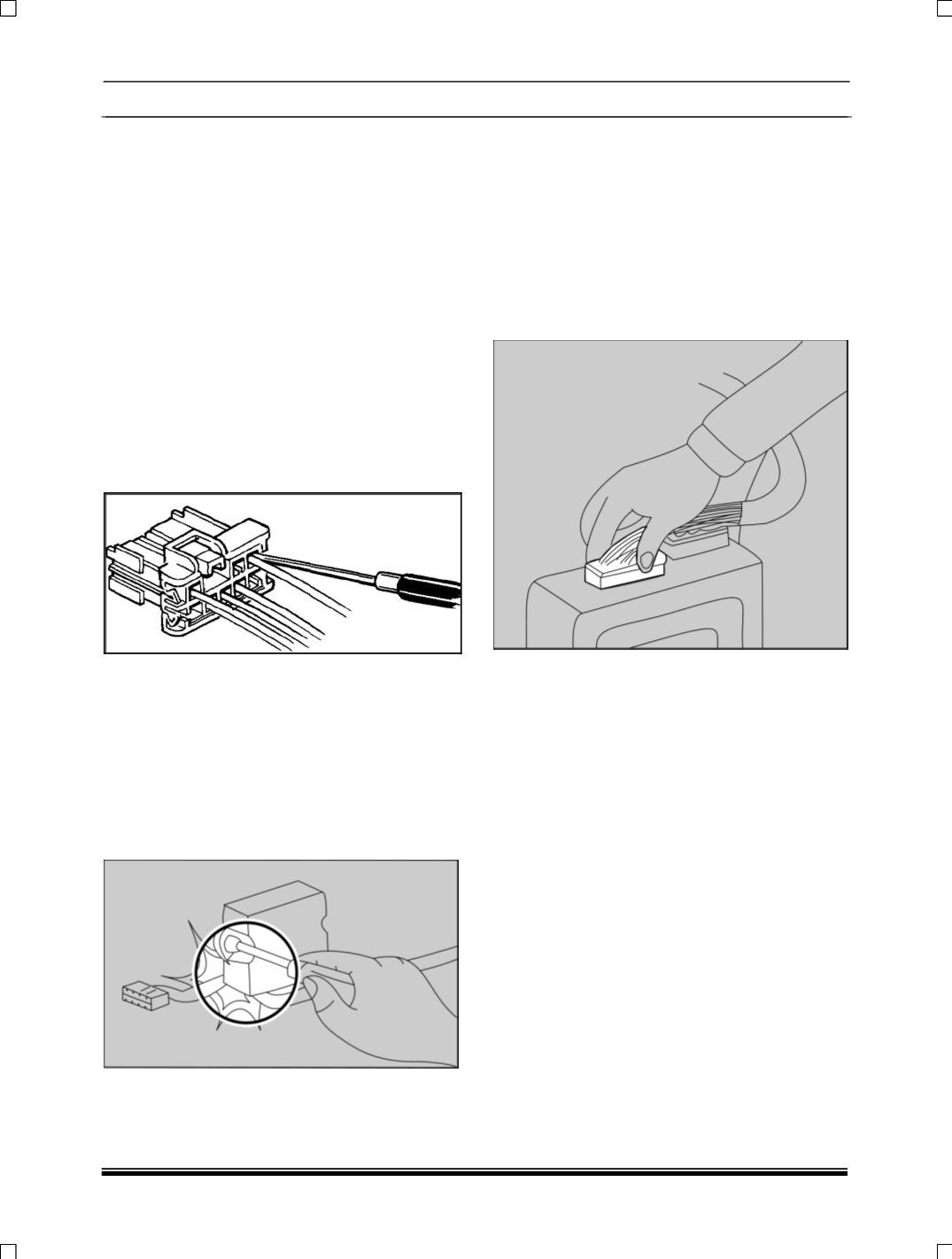

ELECTRICAL
4
Connect the wires in the reverse order of
disconnecting.
c. When replacing any fuse, make sure to use the
specified capacity fuse. Using a fuse with a
larger capacity can cause damage to the
electrical parts or a fire.
d. Do not handle electrical/electronic parts (
ECU,
relay, etc)
roughly or drop them.
e. Do not expose electrical/electronic parts to high
temperature (
approximately 80°C (170°F) or
higher
) or water.
f. For open back connectors be sure to insert the
tester probe in to the back side (
wiring harness
side
) of the connector for inspection. For sealed
back connectors apply the tester probe to the
terminal as gently as possible not to damage or
deform the terminal. Make sure to use probe
with tapered tip.
g. Before commencing work on an ignition
system, all high tension terminals, adapters and
diagnostic equipment for testing should be
inspected to ensure that they are adequately
insulated and shielded to prevent accidental
personal contact and to minimize the risk of
shock.
8. When installing any of the vehicle parts, be
careful not to pinch or damage any of the wiring
harness.
9. Connectors and Harnesses
The engine compartment of a vehicle is a
particularly hostile environment for electrical
components and connectors. Always ensure these
items are dry and oil free before disconnecting and
connecting test equipment. Never force connectors
apart either by using tools or by pulling on the
wiring harness. Always ensure locking tabs are
disengaged before removal and note orientation to
enable correct reconnection. Ensure that any
protective covers and substances are replaced if
disturbed.
a. Make sure that connectors are connected
securely.










